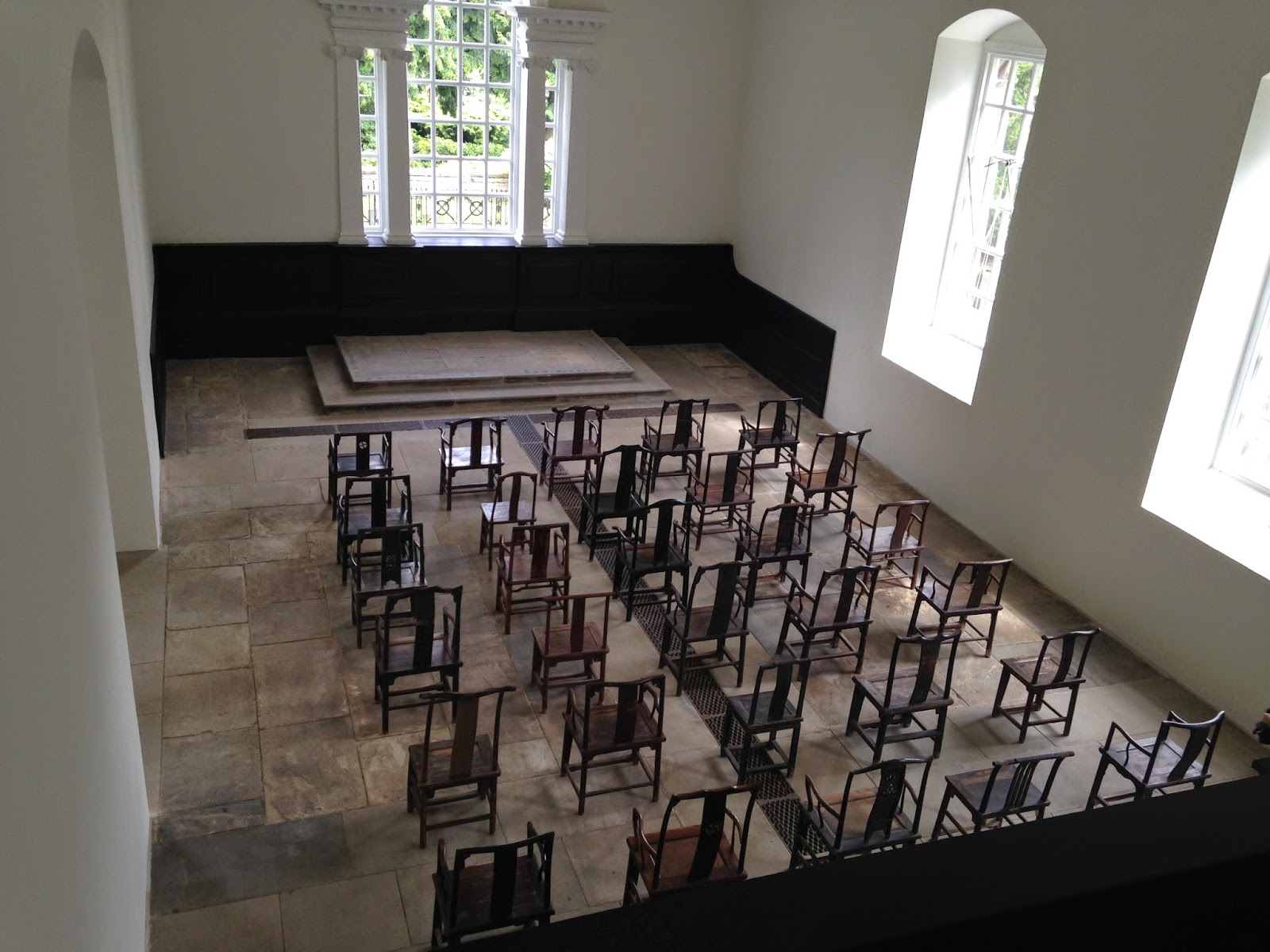 Ai Weiwei in the Chapel
Ai Weiwei in the Chapel
We went to Yorkshire sculpture park on a rainy Sunday, while visiting friends of Niamh in Sheffield.
I've never been too interested in the visual arts, especially of the western high art variety, despite making periodic attempts to engage with it. My grandmother was an amateur painter (but good enough to have a few exhibitions under her belt) and passionate about painting, which must have rubbed off on me, as I did Art at high school and wasn't too bad a drawer and painter, but I finally dropped it as I found it hard to muster the enthusiasm or find much real meaning in it.
So, apart from a nice walk in the lovely Yorkshire countryside, I wasn't expecting much from the art side of things. But I was much surprised to be quite stimulated by it. Set in a former estate, with sheep still grazing everywhere, it's a big place with sculptures dotted over the landscape as well as some indoor exhibits, including a London bedsit that had been sealed and filled with copper sulphate, so all the surfaces were covered in thick blue crystals. The whole was then cut out and taken to Yorkshire! More a bit of fun than art, but I'm sure someone's written a thesis on why it's very important and ground-breaking!
The one exhibition that was really powerful was an installation by the Chinese artist Ai Weiwei, currently under virtual house arrest, called Ai Weiwei in the Chapel. His work focuses on the interplay between the individual and the collective, with a particular interest (if that's not too anodyne a word!) on freedom, and its repression, in China. It was set up in and around a former chapel, a small stone building set on a slope amongst big trees. Outside was a tree made of cast-iron – multiple casts of different trunks and limbs bolted together in a deliberately rough way (I mislaid my camera, so no photos!). I find the descriptions of art as dubious as those on wine bottles, so, I thought it was great, but, without reading it first, I wouldn't have seen it as a comment on the place of the individual in the collective (but see here to make up your own mind). The piece I found most moving, however, was very simple – a few rows of old, simple chairs of disparate size and design and the artist's invitation to sit and think about the meaning of freedom and choice, as well as who had sat in that room over the many centuries since the chapel had been built (see photo at the top).
It seems such a simple suggestion, but I found myself sitting, suddenly aware of the time that had gone before me, and also aware of how little I knew of what those people would have been like, what they would have been thinking or how they would have viewed that space. I also thought about the artist's struggle for freedom – as well as currently being more or less under house arrest, he spent years in internal exile as his father was also a prominent artist and, like Weiwei, in turns part of the establishment, in turns a dissident – and my time in China. It was clearly a police state, with surveillance everywhere, yet, within those constraints people were becoming prosperous, happily consuming and living lives that were in many ways as free as most people in the west. For many there were restrictions on travel, but these were imposed by western bureaucratic requirements much more often than by the Chinese government (I've always marvelled at the hypocrisy of the West following the 'liberation' of the Eastern Bloc – we talked about the evil communists not allowing their citizens to travel, then imposed 'visa restrictions' pretty soon after they had the freedom to leave their own country, so they had freedom to leave, but not to enter!). I wondered whether his sacrifice was worth it, whether it would make much of a difference in the long run, whether his fellow citizens would think him an irrelevant, mis-guided troublemaker, much as the equally unnoticed dissidents in the West are viewed.
Perhaps I'm a bit jaded by the use we make of our own 'freedom' and the ease with which we give willingly give it up for a bit of convenience (for instance the almost complete lack of outrage over the Snowden revelations and our continued willingness to undergo mass surveillance via CCTV and our internet usage), the squandering of our wonderful world on cars and shopping centres.
Looking at the arrangement of the chairs, I also found myself thinking about internal (as opposed to external) oppression. While chairs of different sizes and styles had clearly been chosen to represent individuality and autonomy, and they were spaced widely apart enough to allow people to contemplate in peaceful solitude, they were lined up in neat columns facing the front. This ordering, to me, betrayed a mind still trapped in linear, authoritarian ways of looking at the world (and if you think that's too great a leap, you haven't read a modern art catalogue in a while!), a natural, unconscious instinct to line up neatly, facing towards an authority, the fact that it was an absent one all the more poignant.
Anyway, regardless of the fatuousness of the above, it was a very stimulating ten minutes in the Chapel and a lovely few hours in the Sculpture park (incidentally, it is 2014 Museum of the Year) – highly recommended!